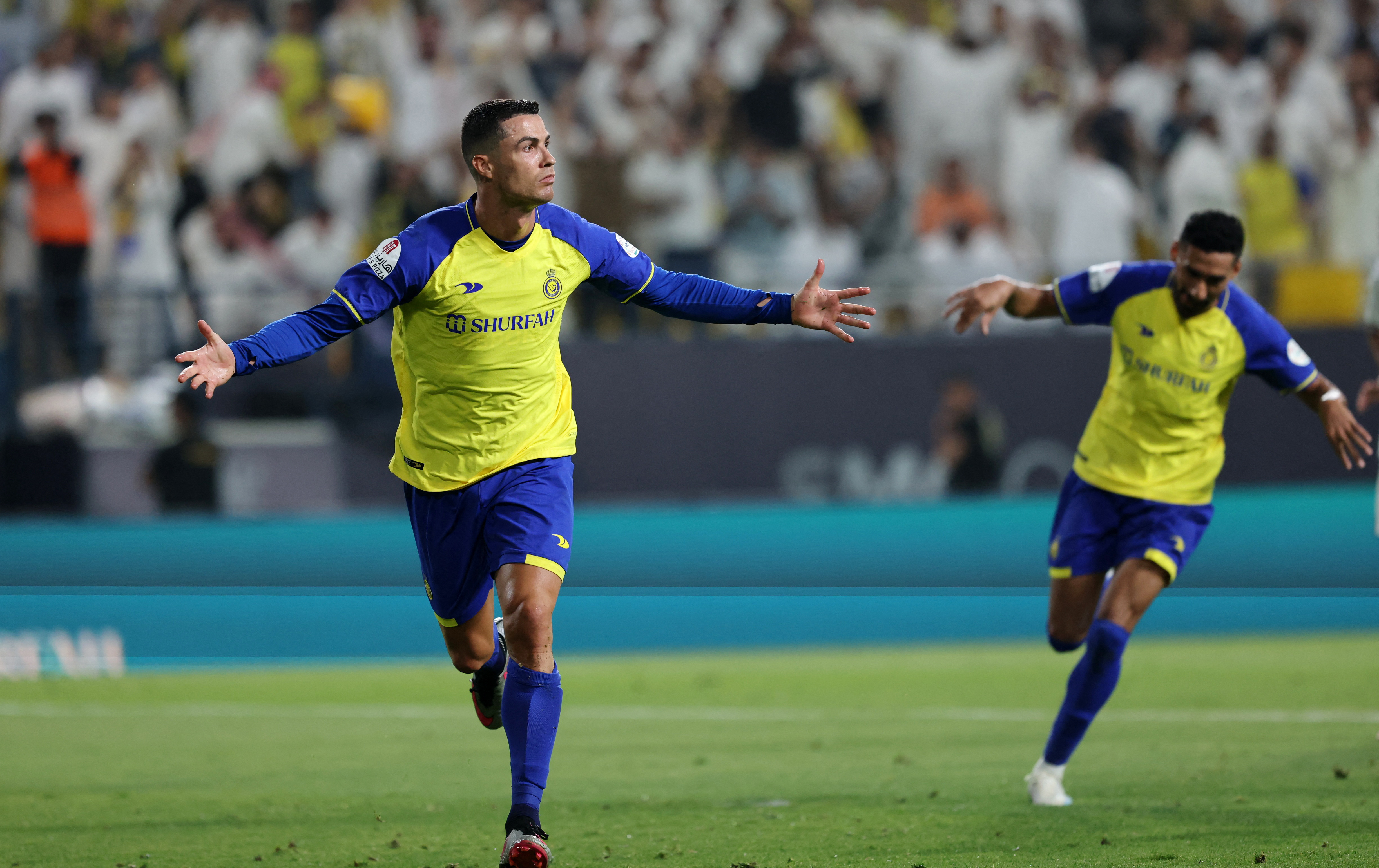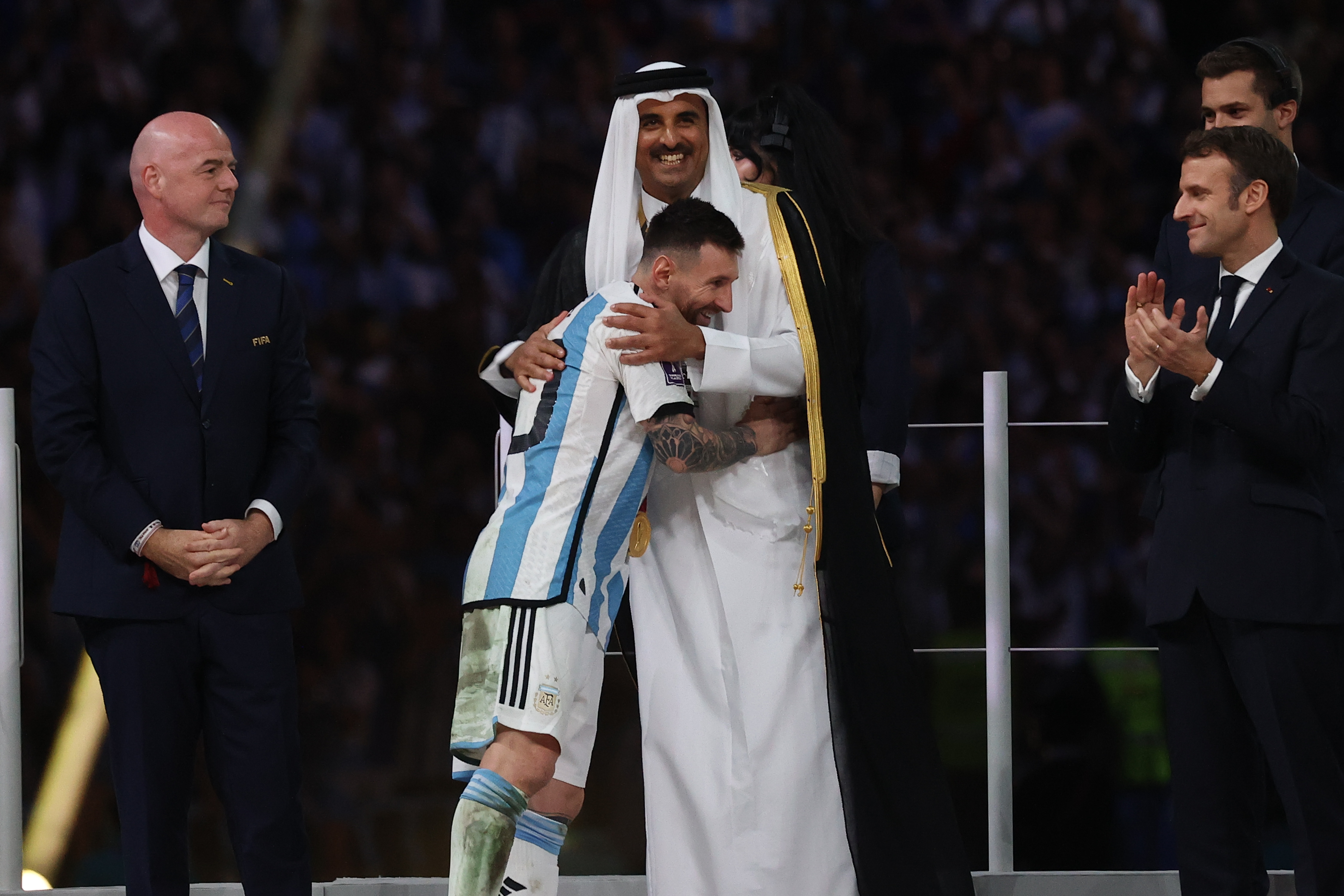
Some of football’s biggest names will play next season in Saudi Arabia.
Portuguese superstar Cristiano Ronaldo joined Al Nassr in December, while this month French duo Karim Benzema and N’Golo Kante left Real Madrid and Chelsea, respectively, for Saudi champions Al Ittihad. Many more stars are expected to arrive before the start of the Saudi Professional League (SPL) in August.
But arguably just as significant as the blockbuster transfers has been an announcement this week that the kingdom’s sovereign wealth fund, overseen by Crown Prince Mohammed bin Salman, would take over four big domestic football clubs: the Riyadh-based Al Nassr and Al Hilal, and the Jeddah-based Al Ittihad and Al Ahli.
The ownership shift to the Public Investment Fund (PIF) signalled the start of a process to privatise clubs which have historically been under the control of the Ministry of Sports and relied on the state for financial support.
“There has been significant state involvement in football clubs in the past, most notably in terms of writing off debts, even as recently as 2022,” said Simon Chadwick, professor of sport and geopolitical economy at SKEMA Business School. “Now, they are trying to culturally transform these organisations from being state dependent into being much more purposeful strategic and businesslike organisations.”
According to the state-run Saudi Press Agency (SPA), the process aims to encourage the sport’s growth by attracting further investment, including by eventually enabling private sector involvement in clubs.
The plan centres around three main areas: Create an appealing investment environment; improve the governance of the clubs clubs in order for them to become more professional and financially sustainable; and boost their competitiveness by upgrading their infrastructure, SPA said. Reports also pointed out that the PFI has in the past taken control of entities before privatising them, though not always fully.
Chadwick said that further down the line, the Saudi clubs could attract outside buyers, much the same as those in the English Premier League. “Saudi Arabia wants to generate inward investment funds … from US private equity investment or investment from elsewhere in the world – and to make the clubs attractive they need to transform them to become more viable commercial propositions.”

While the levels of spending on foreign players are unprecedented, the idea is not new. When Pat Janssen was CEO of Riyadh-based club Al Shabab in 2017-18, privatisation was also on the agenda.
“We prepared as part of a trial run,” Janssen said. “It’s not that we weren’t a professional team, but it’s more about how you do business off the field.”
Becoming private entities will bring the teams into line with the biggest clubs in the world. “It will mean they will operate better in the long term and not just think about year on year as it is very easy to spend the government’s money and do so without accountability,” Janssen said.
Growth in all areas
The idea of privatisation is not just about being more accountable with money but putting structures into place that will enable the clubs and the league in general to become stronger financially.
The initial target is for the SPL’s revenue to grow from about the current $120m a year to $480m by 2030. During the same period, the expectation is for the league’s value to have grown to about $2.14bn from $800m, SPA said.
Last year, Ronaldo’s arrival helped the league to sign dozens of overseas broadcasting deals.
“If you measure it by commercial rights, these players make a big difference,” said Janssen. “They put bums on seats, sell merchandise, attract media attention which sells media rights which attracts sponsorship.”
Signing some of the most famous players in the world is a big step in an ambitious government plan for the league to become one of the top 10 in the world.
“With the right strategy in place, I can’t see it not happening,” said Janssen. “It won’t be easy, however. One of the biggest obstacles on this path is that within football one of the most difficult things to accept is change.”
Achieving change can be difficult. Most European clubs have grown organically going back more than a century. In Asia, South Korea started the continent’s first professional league in 1983.
Governments, either directly or indirectly, still play a significant part in providing stability, and moves towards privatisation in Asia have been mixed. There has been success in Japan and Thailand. But in Malaysia, most clubs have been traditionally run by state governments and a long-planned privatisation has moved slowly, partly due to the COVID-19 pandemic. In the Middle East, ties between the state – direct or indirect – and the game have traditionally been strong. In Iran, there have been moves to separate massive Tehran clubs Persepolis and Esteghlal from the Ministry of Sports, but this has been repeatedly postponed.
“There is a lack of knowledge and experience in commercialisation and privatisation in Asia,” said Chadwick, pointing to China’s current struggles despite the fact that clubs spent hundreds of millions of dollars on big-name foreign players and coaches in the previous decade.
“Officials simply didn’t have the expertise to deal with what they were confronted with.”
The difference between the vision and the reality has been a feature in Asian football, but Chadwick points to the success of last year’s World Cup in Qatar, the first to be held in the Middle East, as the model and inspiration for Saudi Arabia.
“The Qatar World Cup demonstrated that Gulf countries can bridge this gap and what is intended can be delivered successfully. Saudi Arabia will draw inspiration from this and believe it can succeed where other Asian countries have failed,” Chadwick said.

On the ground
Riyadh-based club Al Shabab were not among the four teams taken over by PIF, and it remains to be seen how the six-time champions can compete.
“I feel disappointed as Al Ahli were in the second division last season while we finished fourth and did well in Asia,” said Al Shabab fan Abdulaziz Hawsawi. “Perhaps they wanted two teams from Riyadh and two from Jeddah, so we will have to see what happens, but these are big changes for the league.”
But others in the capital are happier. “Privatisation is a major shift for our league in the world of professionalism and to create an attractive environment and competition to become one of the best leagues in the world,” said Ayman al-Hatami, an Al Hilal fan and social media influencer.
“Al Hilal is a champion club and will increase in strength and be able to win championships that it had never won before.”
With better players, better stadiums will also need to be built, observers say, and the hosting of the 2027 Asian Cup is expected to help in that direction. Ronaldo himself has mentioned that improvement should not be just about players.
“The league is very good but I think we have many, many opportunities to still grow,” he said in an interview with the Saudi league. “They need to improve a little bit more the infrastructure. And in my opinion, if they continue to do the work that they want to do here, for the next five years, I think the Saudi league can be a top-five league in the world.”
There is a long way to go for that to happen, but at least Saudi Arabia has the attention of the whole of football. “It will be interesting to see what transpires in the next five or 10 years,” said Chadwick. “The state is still there and paying close attention while trying to encourage a more entrepreneurial and innovative culture. This is not free-market football, but is also not centrally planned football. It is a Saudi Arabian model.”







